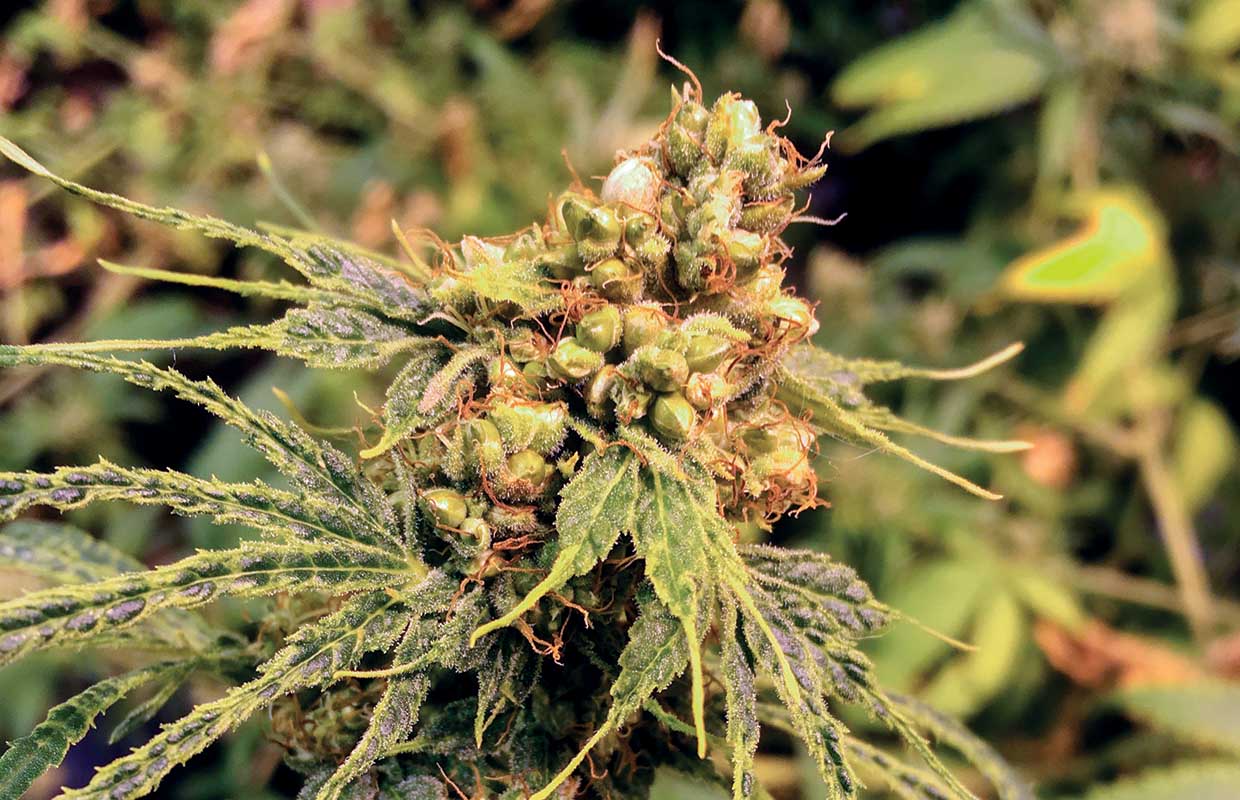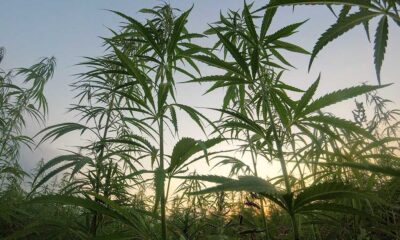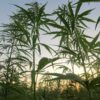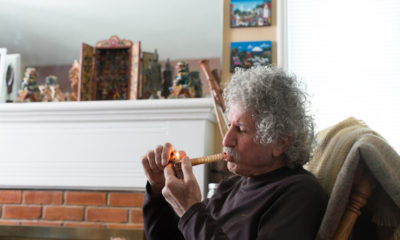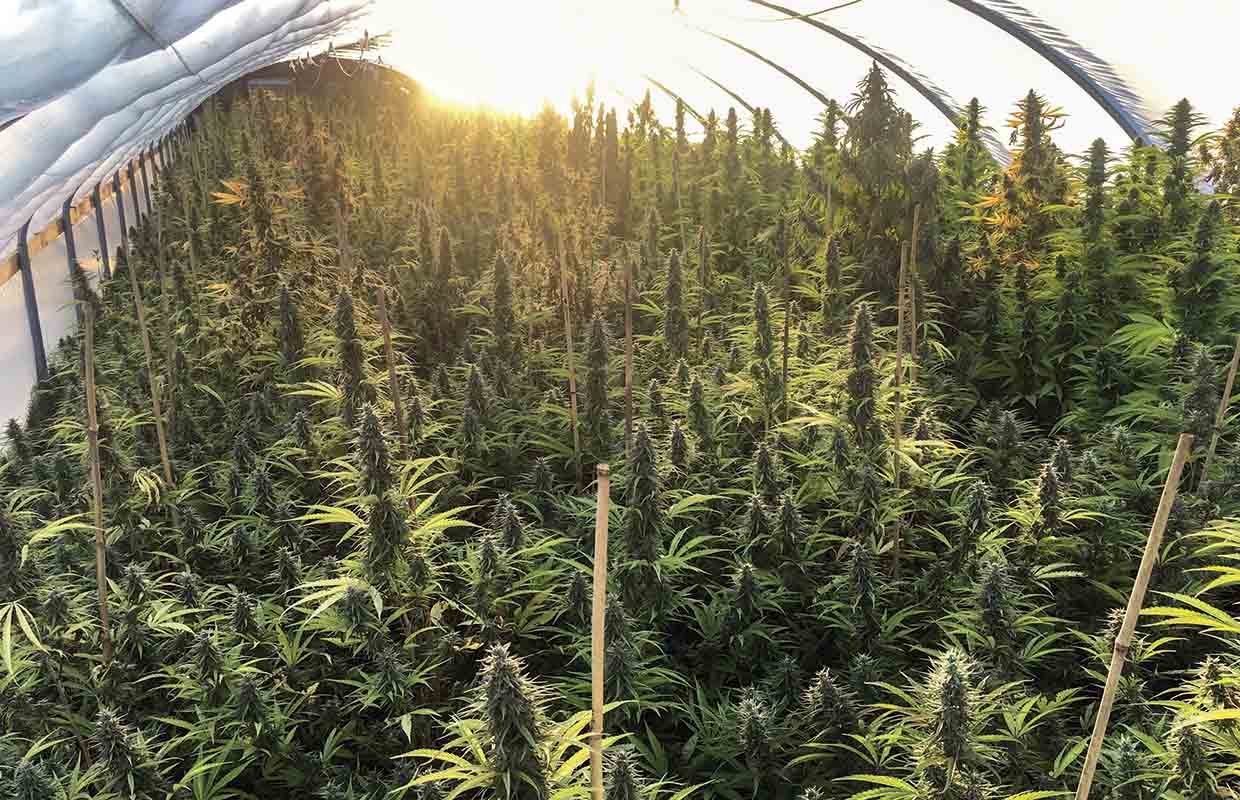Oregon’s Sinsemilla Worries
Hemp pollen could sow seeds of destruction.
Most cannabis smokers born before the ’90s know the familiar sound of torching an unwanted seed. It begins with a pop, turns to harsh smoke and culminates in a fierce headache.
Fortunately, our great nation is blessed with an abundance of sinsemilla (cannabis without seed) — but in the state of Oregon, seeds are not only a looming threat to the consumer, but the entire industry at large.
Cannabis is predominantly grown for its cannabinoid-rich flowers, or buds, which occur on the female plant. The male plant is the pollinator and if it’s near female plants, it will cause the females to put their energy into seed production instead of desirable cannabinoid compounds.
Unwanted pollination works against growers by lowering the quality of the flower and sabotaging carefully cultivated or procured genetics. Most in the industry know to cull the males, plant feminized seed or grow from clone-propagated female plants in order to protect their fields.
In 2009, the Oregon Legislature legalized the production of industrial hemp, but the first handful of crops was not planted until 2015. Today, over 100 farmers are registered with the state.
Few Oregon hemp growers actually produce the plant for its fibers or seed. The vast majority produce it for cannabidiol, or CBD, which is extracted from the female flower. The non-psychoactive cannabinoid is understood to be extremely beneficial to humans and animals and thus is highly sought after — for sleep aides and anti-inflammatories, to seizure reduction and appetite stimulation.
An Oregon Department of Agriculture Industrial Hemp registration allows for unlimited plant count and acreage. The state and the federal government mandate psychoactive-THC percentages remain below 0.3 percent, but it is otherwise open season for farmers to plant as much as they possibly can.
The bigger the field, the bigger the yield — but in the case of cannabis, uncontrolled hemp fields could be the downfall of the entire industry. The problem goes back to the male plant and its pollen, which can travel for miles in the wind.
For Seth and Eric Crawford, co-owners of Corvallis-based Oregon CBD, careless crop management is not just a threat, but also a reality. The two brothers see the problem as the result of a lack of education.
“There are large scale farmers in Oregon right now who don’t think pollen or seeds in your flower is a big deal or understand how far pollen can travel,” Seth says.
Seth added, “We lost $2.5 million in flower value on one field and an entire R&D seed crop last year from cross contamination from another farm.”
The Crawfords started in the industry as breeders, tracking down low-THC varietals and creating their own feminized seed stock of strains rich in CBD but industrial hemp compliant. Last summer they cultivated over 30,000 cannabis plants in five different counties, all from their own seed stock.
On their largest crop in Benton County, they found seed in every single flower. While one could assume they may have accidentally pollinated the plants themselves, after growing out the seed from their field they found something was awry: Their CBD rich strains produced offspring with equal amounts of THC and CBD.
“We have bred varieties that have 40:1 CBD to THC ratios, and all of our flowers tested below state industrial hemp standards,” Eric says. “When we grew out the seed from the plants in our field and our greenhouses, we found they had a 1:1 ratio, meaning we had been pollinated by someone growing a high THC variety.”
The Crawfords looked to their neighbor a few miles away, a farmer who had densely planted 75 acres of hemp after obtaining low cost, untested seed. When the state came to test his crop, they discovered far too high of a THC percent for an industrial hemp field, but the damage had already been done. His unkempt crop had to be left unharvested, and the pollen had infected not only the Crawfords’ field, but also their greenhouse several miles away where they breed their seed.
“We hand pollinate every plant in our greenhouses and we do not allow male plants at our facility,” Eric says. “When we grew out our seed stock from the greenhouse last summer for testing, we discovered not only high THC percentages and low CBD, but also male plants. At that point we realized the 15 million seeds we carefully produced and processed were useless. At $1 per seed average value, it really hit us hard.”
It wasn’t just their field and greenhouses that were hit though. Another field in Junction City was also contaminated by rogue pollen after a hemp farmer planted several acres, then left it unattended. After hundreds of tests on resulting seedlings, only two of their five fields were pure.
“We lost a lot last year, but others lost even more,” Eric says. “There were a few fields full of males last year around the state, mostly in the Willamette valley. Medical grows, rec sites, and personal plants were hit hard by this.”
Seth, a member of the advisory committee for the Oregon Health Authority’s medical marijuana program and the Oregon Department of Agriculture’s Industrial Hemp Rules Advisory Committee, is working to find a common ground.
“We are trying to coordinate efforts between hemp, medical and recreational cannabis growers, as well as the state to come to some sort of agreement,” he says. “Communication during farm planning is key. Be it a buffer zone between hemp and seedless growers, or an all-out ban on males in certain areas, there is a huge industry at stake here. We just want to keep seed out of everyone’s weed.”
With over 1,000 recreational marijuana business licenses approved already this year — and well over 100 industrial hemp licenses — only time will tell if one industry will sabotage another.
Originally published in Issue 27 of Cannabis Now. LEARN MORE
TELL US, are you worried about your crop going to seed?



